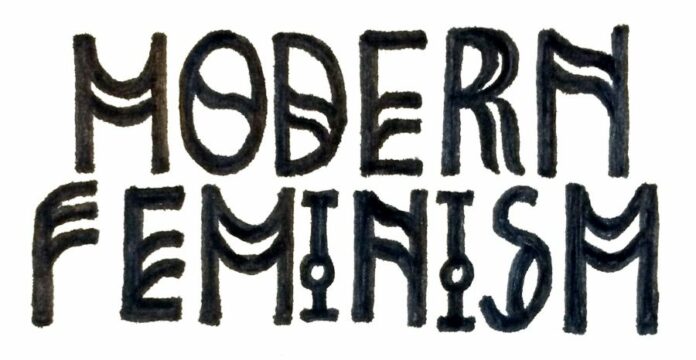In the complex landscape of contemporary sociopolitical discourse, modern feminism emerges as both a beacon of hope and a source of contention. The question arises: is modern feminism divisive in the West? This inquiry invites us to traverse the intricate nuances of feminist movements, the intersectionality of identities, and the societal implications therein. Feminism, in its various manifestations, has engendered profound discussions concerning gender equity, but it is also critiqued for its perceived fragmentation. Therefore, an examination of its implications and ramifications is imperative for understanding its role within modern society.
Understanding the Essence of Modern Feminism
At its core, modern feminism encapsulates a myriad of ideologies striving for the egalitarian treatment of all genders. Yet, the term “modern feminism” itself is an umbrella encompassed by divergent perspectives. From liberal feminism advocating for equality within existing structures to radical feminism calling for a complete overhaul of societal norms, these distinct avenues reflect a spectrum of interests.
Moreover, the rise of intersectionality—popularized by scholars such as Kimberlé Crenshaw—has significantly shaped the contemporary feminist movement. Intersectionality posits that various social identities such as race, class, gender, and sexuality interconnect, affecting an individual’s experience of oppression. This nuanced understanding enriches the feminist discourse while simultaneously presenting challenges in creating a unified front.
The Rifts Within Feminism
As feminism has evolved, so too has the emergence of fractures within its ranks. The delineation between mainstream feminism and more radical factions can give rise to misconceptions and alienation within societal frameworks. Feminism’s pluralistic nature can lead to niche movements that, while striving for crucial transformations, may inadvertently exacerbate divisions.
This fragmentation often manifests through heated rhetoric surrounding issues like body positivity, sexual autonomy, and the dynamics of privilege. For instance, the body positivity movement, while championing the empowerment of individuals regardless of physique, has been critiqued for perpetuating a narrow definition of beauty that can alienate certain groups, particularly those who may not fit even within this broader category.
Moreover, the discourse surrounding trans rights has become a notable point of contention within feminist circles. Some factions assert that the inclusion of transgender women dilutes the feminist narrative, invoking debates that may alienate potential allies. The challenge here is to foster inclusivity while preserving the integrity of feminist aims, a task that is continually navigated amidst passionate debates.
The Claims of Divisiveness: Rhetoric or Reality?
Critics frequently proclaim that modern feminism’s fragmentation transgresses into divisiveness. They argue that as the movement becomes more multifaceted, it fosters an environment ripe for conflict rather than collaboration. This sentiment is reinforced by social media, which acts as a double-edged sword; while it democratizes spaces for discussion, it also amplifies dissenting voices that may seek to undermine the foundational principles of feminism.
However, it is crucial to scrutinize the dichotomy presented between unity and divisiveness. A movement that grapples with an array of identities and experiences is not inherently flawed. Rather, modern feminism’s willingness to confront complex realities can be viewed as a hallmark of its vitality. The challenge lies in cultivating dialogues that respect divergent perspectives, instead of retreating into echo chambers that stifle innovation and solidarity.
Strategies for Unity: Embracing Diversity Within Feminism
To navigate the treacherous waters of divisiveness, modern feminism must prioritize empathy and understanding. The formulation of coalitions that transcend ideological divides can establish a robust platform for collaboration. This necessitates acknowledging each faction’s contributions while advocating for an overarching objective: the pursuit of gender equity.
Engaging in constructive debates, rather than confrontational exchange, will allow feminists to address conflicts without sacrificing their cause. Forums that actively promote discussions around intersectionality can serve as vital spaces where disparate voices are not only heard but celebrated. Workshops, panels, and inclusive coalitions provide opportunities for feminists to collaborate while emphasizing the importance of intersectional identities in shaping the movement.
The Role of Education and Advocacy
Furthermore, the need for educational initiatives cannot be overstated. Comprehensive educational programs that unpack the history of feminism, alongside contemporary debates, can empower individuals with knowledge that bridges gaps in understanding. By fostering informed discussions, advocates can illuminate the interconnectedness of various feminist ideologies, thus encouraging a multiplicity of interpretations that strengthen the movement’s resilience.
Moreover, advocacy work that addresses social and economic disparities can effectively unite feminists under a common banner. Initiatives that prioritize marginalized voices—such as those from low-income backgrounds or people of color—serve to galvanize action that speaks to shared human rights struggles, thus enhancing solidarity. Inclusive advocacy reframes the narrative from individual grievances to collective action, underscoring the imperative of unity in the face of systemic oppression.
A Historical Perspective: Lessons from the Past
Historically, movements often face similar critiques concerning divisiveness. The suffragette movement, for example, was marred by tensions within its ranks, particularly regarding the exclusion of women of color and working-class women. The struggle for women’s voting rights divided supporters, and this historical precedent unveils the persistent challenge of inclusivity within feminism. By examining past mistakes, contemporary feminists can draw lessons on embracing diversity, thus fortifying the movement against fragmentation.
Conclusion: A Collective Journey Towards Empowerment
Ultimately, the question of whether modern feminism is divisive necessitates a nuanced exploration that transcends superficial judgments. While divisions are palpable, they also signify the movement’s dynamism and responsiveness to the complexity of modern society. By acknowledging both the fractures and the potential for unity, feminism can evolve into a more inclusive and powerful force for societal change.
It is imperative for feminists, regardless of their affiliations, to recognize shared objectives while honoring individual narratives. The strength of modern feminism lies not in its homogeneity but in its capacity to embrace a kaleidoscope of identities. In contending with the challenges of divisiveness, modern feminism has the potential not just to advocate for gender equity but to foster an empowering environment for all individuals, fostering a collective journey toward liberation.





























